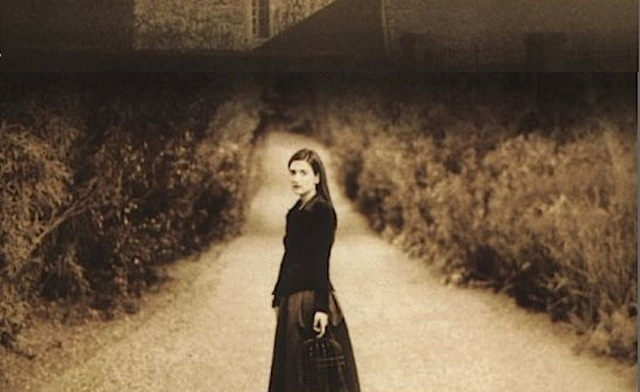Return to Edgewood

When I was growing up, my dad spoke fondly about the time in his life when he reread his favorite book, Crime and Punishment, once a year. “On an exceptionally hot evening in July,” he would quote in a funny voice, imitating a friend who didn’t get his love for the book, “a young man came out of his garret on S Place and walked slowly toward K Bridge–what is this stuff?” But during the 1970s, he made a point of reading the book every year.
 I reread constantly and without ceremony (see all my previous columns on books I’ve read over and over) but I too, have a book I read yearly. It’s Little, Big, by John Crowley, a sprawling fantasy family saga. Sometime during the summer, some hot and languorous week, I have a strong sense that it’s time. I drop the five other books I’m in the middle of, find a place to read and a bowl of apples, and return to the story. I haven’t memorized the first line like my dad did with his book, but Little, Big starts with Smoky Barnable walking from the City to the house called Edgewood to get married. Alice (called Daily Alice) Drinkwater is waiting. She takes a bath in Edgewood’s Gothic Bathroom, with stained glass and a stone tub (this is an indelible image for me). And the story goes inward and outward.
I reread constantly and without ceremony (see all my previous columns on books I’ve read over and over) but I too, have a book I read yearly. It’s Little, Big, by John Crowley, a sprawling fantasy family saga. Sometime during the summer, some hot and languorous week, I have a strong sense that it’s time. I drop the five other books I’m in the middle of, find a place to read and a bowl of apples, and return to the story. I haven’t memorized the first line like my dad did with his book, but Little, Big starts with Smoky Barnable walking from the City to the house called Edgewood to get married. Alice (called Daily Alice) Drinkwater is waiting. She takes a bath in Edgewood’s Gothic Bathroom, with stained glass and a stone tub (this is an indelible image for me). And the story goes inward and outward.
Little, Big is subtitled, in the style of Victorian novels, The Fairies’ Parliament, and it is indeed an exploration of the sympathetic magic between world and person, Word and utterance, wood and bird. The family story of the Drinkwaters is implicated in a magico-political rebuilding of America. A heartbroken young man builds a memory palace. Alice’s great-uncle photographs fairies in the bottom of the garden. Edgewood’s rusty orrery grinds back to orbit. The title reminds you to be attentive to the echoes of “as above, so below” throughout Smoky and Alice’s family story.
I’m not surprised, really, that I can’t recite the first line, because while the book’s language is beautiful, lyrical, and deliberate, I experience it after so many rereads as a sequence of dream images. When I reread Little, Big I fall back into them. I read for the images I can’t forget — and for unremembered images so vivid I’m amazed I could forget them. Every time I reread I’m struck by an incident involving a changeling that I find so terrifying that I block it out, just like the characters do. The structure is cyclical, too, so that I know that the story will turn back, like the paths in the private walled garden in the novel. I haven’t reread Little, Big yet this summer, but soon.
On a certain day in June, 19–, a young man was making his way on foot northward from the great City to a town or place called Edgewood, that he had been told of but had never visited. His name was Smoky Barnable, and he was going to Edgewood to get married; the fact that he walked but did not ride was one of the conditions placed on his coming there at all.
—
Suzanne Fischer is a historian and writer who lives in Detroit. She cares about people, places, and things. Find her on Twitter as @publichistorian